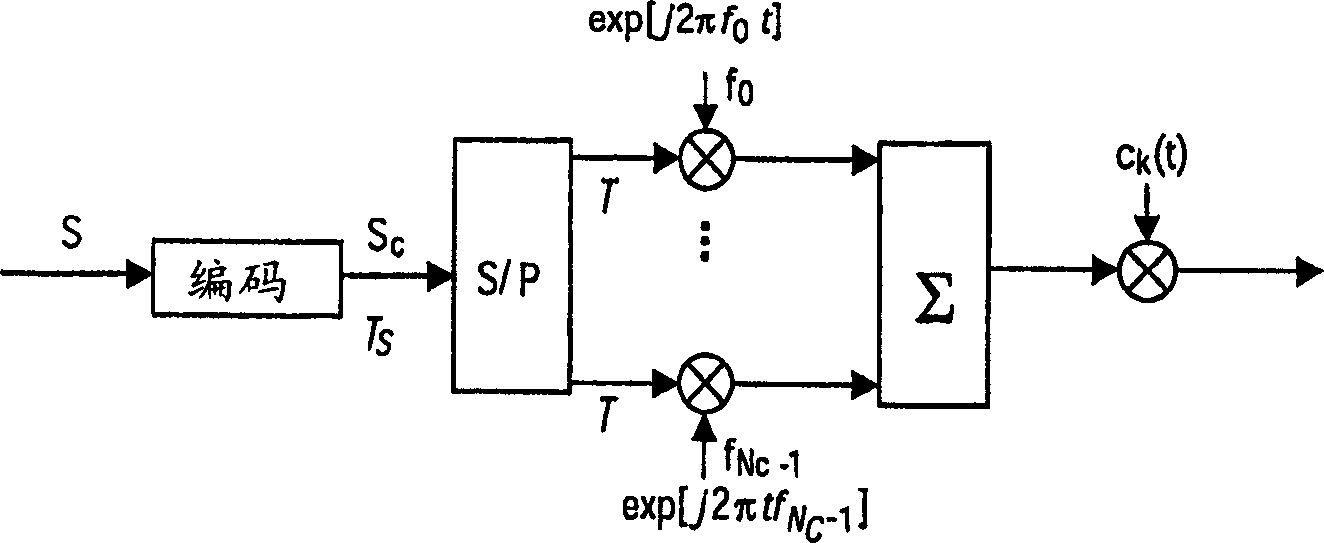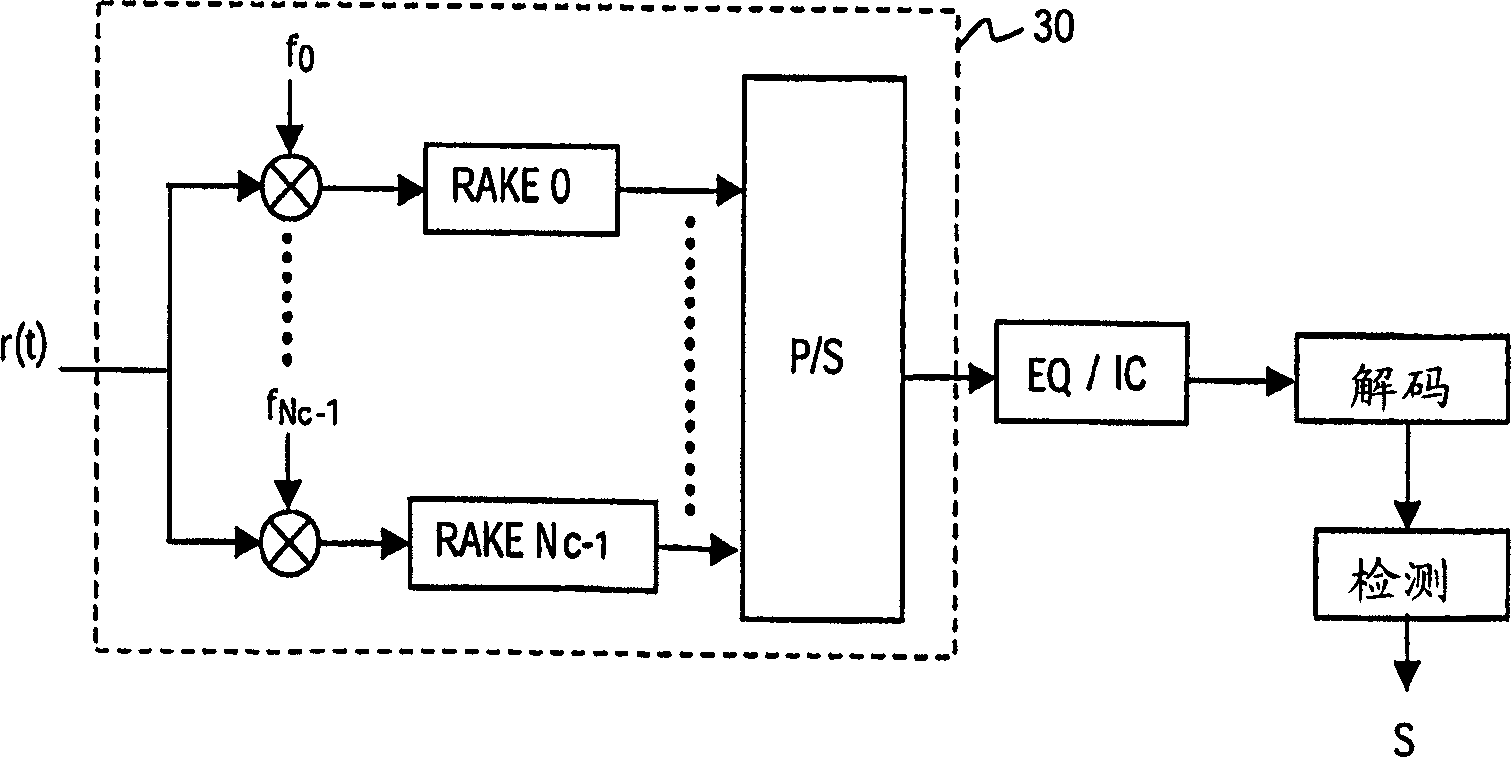MT-CDMA using spreading codes with interference-free windows
A non-interference, spreading code technology applied in the field of digital transmission, which can solve the problems of high peak-to-average power ratio, loss of user capacity, system frequency offset and nonlinear amplification sensitivity, etc.
- Summary
- Abstract
- Description
- Claims
- Application Information
AI Technical Summary
Problems solved by technology
Method used
Image
Examples
Embodiment Construction
[0019] figure 1 One MT-CDMA transmitter is shown. The MT-CDMA scheme is mainly proposed for uplink communication of cellular systems due to its asynchronous structure. The encoder ENCOD encodes the input data symbols S of any user k into coded data symbols Sc. The serial-to-parallel converter S / P converts the input coded data symbols Sc into Nc low-rate parallel sub-streams, each of which modulates the subcarrier f p (p=0,...Nc-1), and are added up to obtain one OFDM symbol. The duration Ts of the input encoded data symbols is increased by a factor Nc to obtain T=Nc*Ts as the OFDM symbol duration at the output of the adder. This OFDM symbol is then spread with the associated waveform C of user k k (t) is expanded and sent.
[0020] figure 2 shows the spectrum of the MT-CDMA signal, including the f 0 , f 1 ,.., f Nc-1 Nc subcarriers of . The subcarrier spacing is 1 / T, so the Nc parallel data substreams satisfy the requirement of orthogonality before expansion. Howev...
PUM
 Login to View More
Login to View More Abstract
Description
Claims
Application Information
 Login to View More
Login to View More - R&D
- Intellectual Property
- Life Sciences
- Materials
- Tech Scout
- Unparalleled Data Quality
- Higher Quality Content
- 60% Fewer Hallucinations
Browse by: Latest US Patents, China's latest patents, Technical Efficacy Thesaurus, Application Domain, Technology Topic, Popular Technical Reports.
© 2025 PatSnap. All rights reserved.Legal|Privacy policy|Modern Slavery Act Transparency Statement|Sitemap|About US| Contact US: help@patsnap.com



